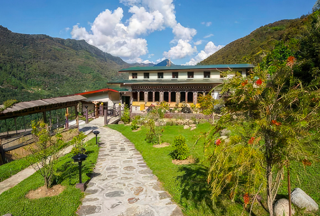Day 1:
Arrive Paro Valley, Bhutan. Alt. 2280m.
(Lunch/ Dinner)
Bhutan, the Land of the Thunder Dragon, welcomes you. When you arrive at Paro International Airport, your guide will greet you as you exit the arrival area.
We’ll take it easy today to acclimate to the altitude. Drive to Thimphu, settle into your hotel, and get ready to sample Bhutanese cuisine for the first time.

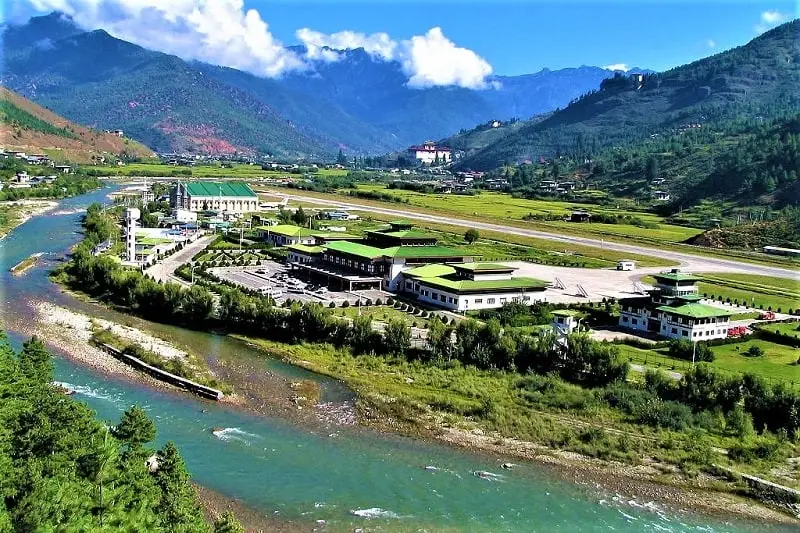
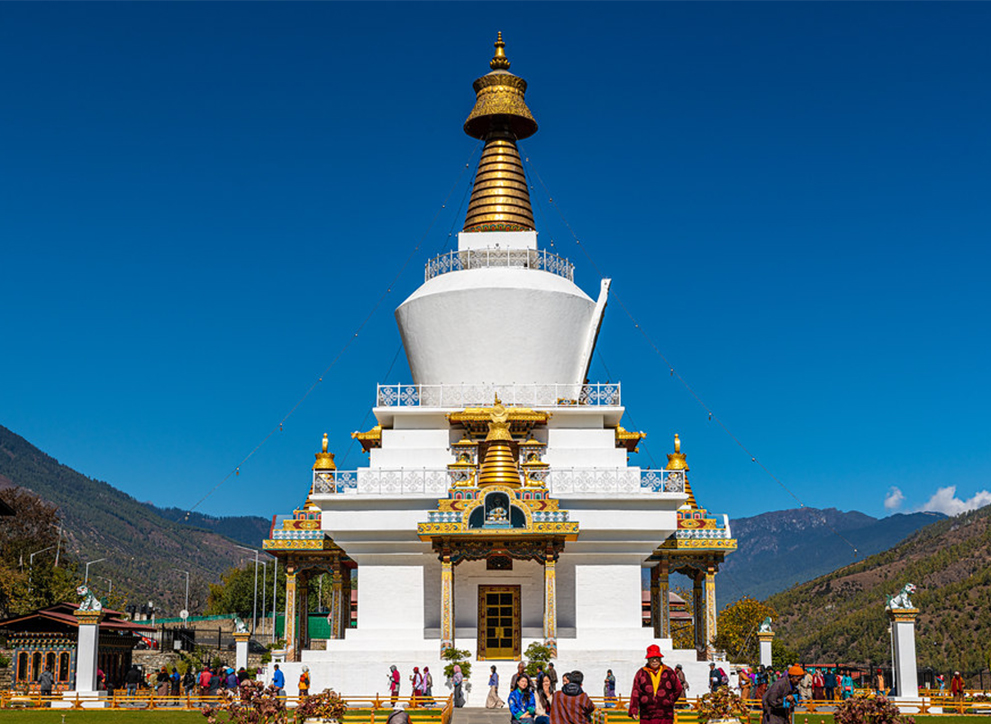
Meet the older generation as they circumambulate the National Memorial Chorten.
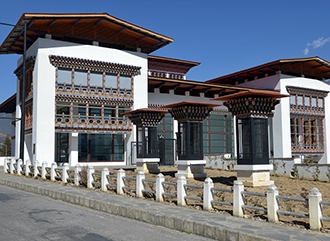
The Textile Museum is a museum dedicated to the art of traditional weaving.
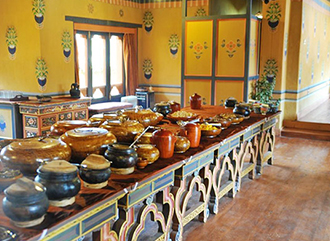
Folk Heritage Museum – Dedicated to bringing people closer to Bhutan’s rural heritage through the display of objects from rural homes.
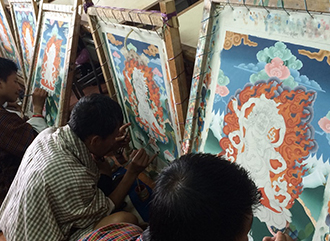
The Institute of Zorig Chusum, also known as the Painting School or the School of the Thirteen Arts, allows visitors to see novices learning 13 ancient Bhutanese arts and crafts.
It’ll be a hands-on experience for you. Spend a few moments with the country’s future artists.
Day 2:
Thimphu
Tshechu/ Festival. Alt. 2320m.
(Breakfast/Lunch/ Dinner)
Tashichhodzong (Thimphu Dzong) – Built in 1641, the “fortress of the great faith” was renovated in the 1960s by the Third King Jigme Dorji Wangchuck.
Tashichhodzong contains the central monk body, as well as several ministries and His Majesty’s secretariat.
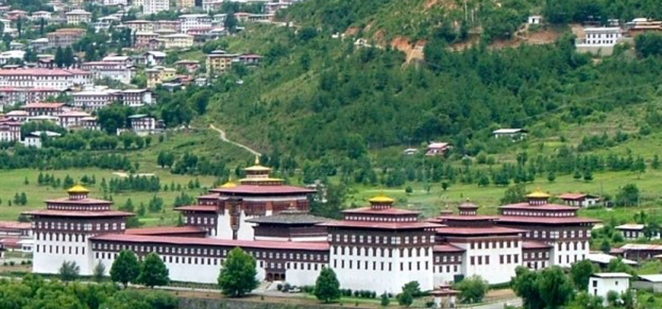
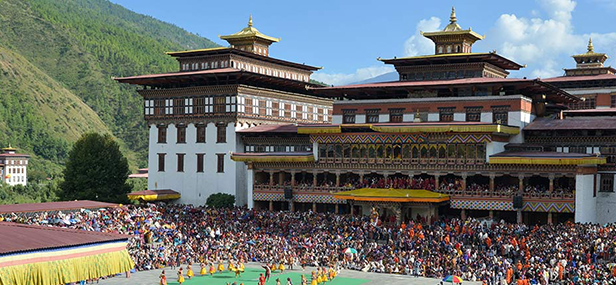
The Thimphu Tshechu, like all Tshechu celebrations, pays tribute to Padmasambhava, also known as Guru Rimpoche, the revered yogi and saint credited with bringing Tantric Buddhism to the Himalayas.
Masked dances are done by monks dressed in colorful brocade and accompanied by chanting and the reading of Buddhist scriptures during the event. The event culminates in the unveiling of a massive cloth thanka, a sacred scroll representing Padmasambhava and Buddhist pantheon iconography.
Buddha Point – The 169-foot bronze statue of Buddha Dordenma. Visitors can drive up to Buddha Point to see Lord Buddha’s largest monument.
From the Buddha point, the view of Thimphu valley is breathtaking and picturesque, especially at night.

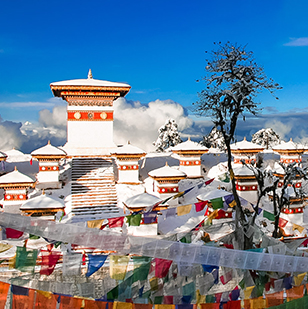

Day 3:
Thimphu to Punakha Valley. Alt. 1300m.
(B/L/D)
Dochula Pass – The current Queen Mother of Bhutan, Ashi Dorji Wangmo Wangchuck, created the 108 chortens to commemorate Bhutan’s victory over Indian terrorists and to free the souls of those who died.
Punakha Dzong – Built in 1637, the dzong is now the winter residence of the clergy, led by Je Khenpo, the Chief Abbott. It’s a spectacular piece of Bhutanese architecture, perched at the confluence of two rivers and giving the impression of a medieval city from afar.
The dzong was ravaged by fire and glacial floods throughout the years but has been carefully reconstructed and is, today, a remarkable example of Bhutanese craftsmanship.
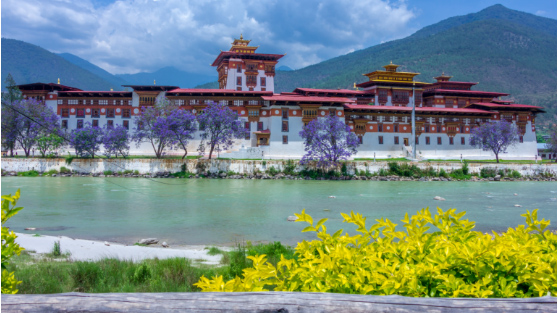

Built by the third Queen Mother Ashi Tshering Yangdon wangchuck, the Khamsum Yulley Namgyal Chorten is a magnificent example of Bhutanese architecture and art, and is the only one of its kind in the world.
It took eight and a half years to construct, and the intricacies were inspired by religious scripture.
Day 4:
Punakha to Phobjikha Valley. Alt. 3000m.
(B/L/D)
Chhimi Lhakhang is a 20-minute trek through the settlement of Sopsokha via terraced fields. After the ‘divine Madman’ Drukpa Kuenlay established a small chorten there, Ngawang Chogyel built the temple in the 15th century.
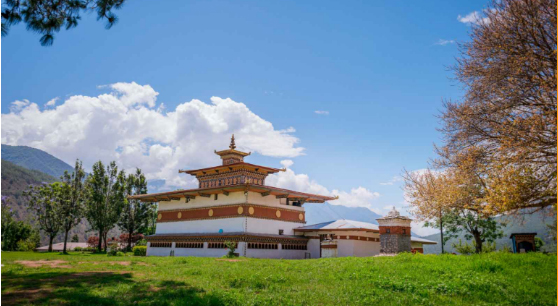
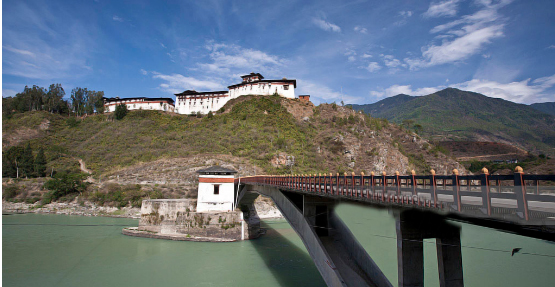
Passing through Wangdue (left), one of Western Bhutan’s major towns and district capital. Wangdue is the last settlement before entering central Bhutan, located south of Punakha. The district is known for its exquisite bamboo carvings as well as slate and stone carvings.
We’ll take a break to see the Wangdue Phodrang Dzong. Wangdue Dzong, built in 1638, is positioned on a spur of a hill and overlooks the Tsang Chu and Dang Chu rivers’ junction.
By the late afternoon, we arrive at the quiet and attractive Phobjikha valley, a large U-shaped glacial valley in the middle kingdom.
Phobjikha valley is home to one of Bhutan’s most prominent monasteries, Gangteng Monastery, as well as a major environment and wildlife preserve for ecosystem conservation. While here at Phobjikha valley , you won’t miss out on the opportunity to practice meditation and go hiking.



Day 5
Phobjikha to Paro Valley. Alt. 2280m.
(B/L/D)
Many of Bhutan’s historic monasteries and temples may be found in the scenic Paro Valley. Paro is home to the country’s only airport.
Mount Chomolhari (7,300 meters) is located near the valley’s northern end, and its glacier water forms the Pachu, which flows through the valley. Some of the most popular sites to visit in Paro you will visit are:
Drukgyal Dzong — We arrive at the newly constructed Drukgyel Dzong after a morning journey north of Paro valley. The Dzong, which was built in 1647 by the great Zhabdrung Ngawang Namgyal, the father and unifier of medieval Bhutan, was destroyed by an accidental fire and left in ruins as a poignant reminder of the tremendous victories it was designed to celebrate.
It is now rebuilt in the name of the new crown prince of Bhutan. Explore the ramparts and reminisce about the glory days of the past.


Ta Dzong – The Ta Dzong was built as a watchtower and was turned into the National Museum in 1968.
Antique Thangka, textiles, weaponry and armor, domestic goods, and a diverse collection of natural and historic relics are all on display at the museum.
The administrative heart of the dzonkhag is Paro Dzong, also known as Rinpung Dzong, a large fortress/monastery built in the 15th century.
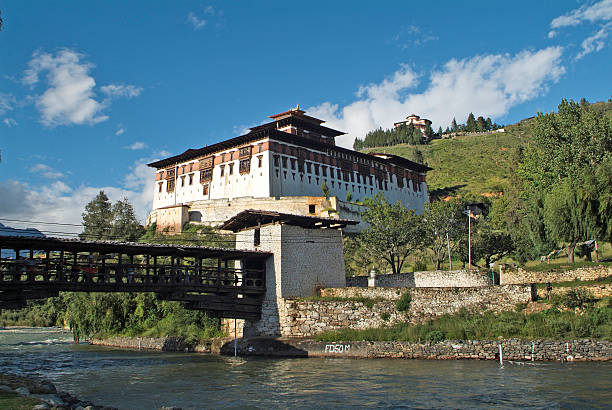
Day 6:
Paro – Tiger’s Nest.
(B/L/D)
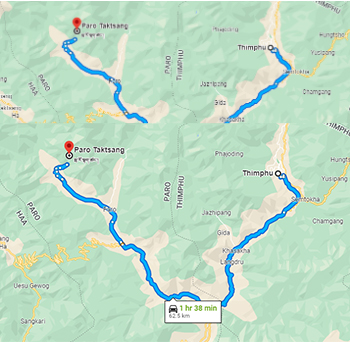
Taktsang Monastery also known as Tiger’s Nest — A one-hour climb to the cafeteria provides a vantage point from which to take in the monastery’s breathtaking views.
The cliffs are adorned with prayer flags, and it was here that Guru Padmasambhava landed on the back of a tigress in the eighth century.
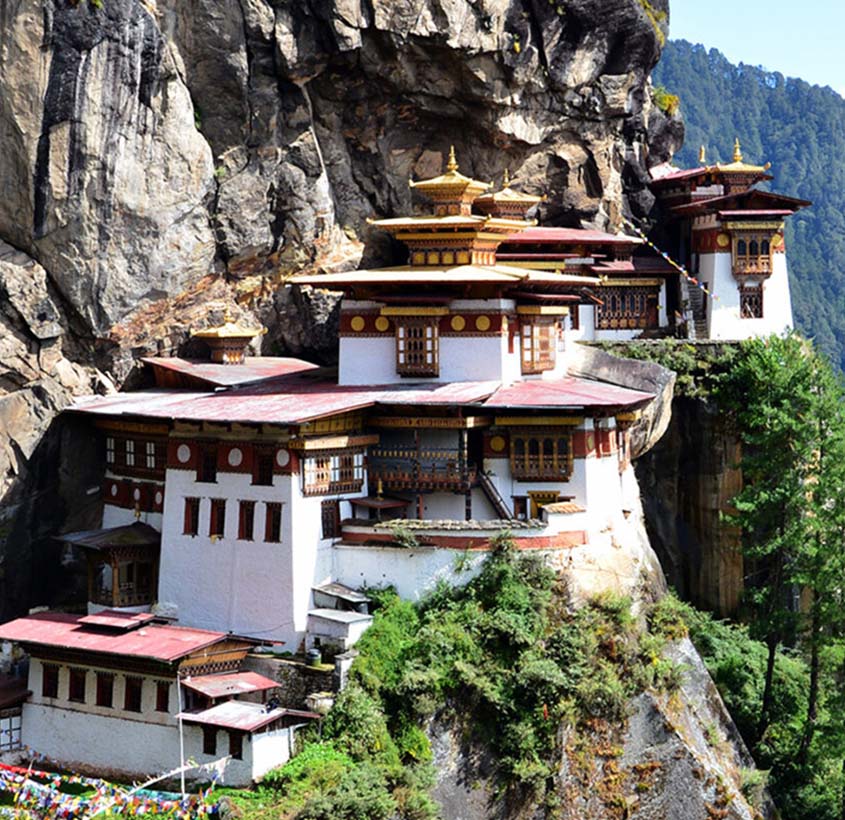
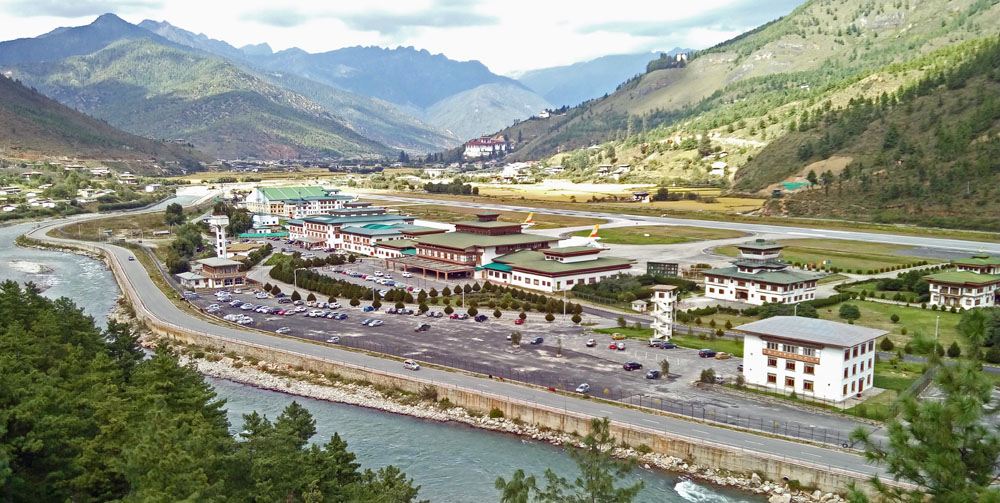
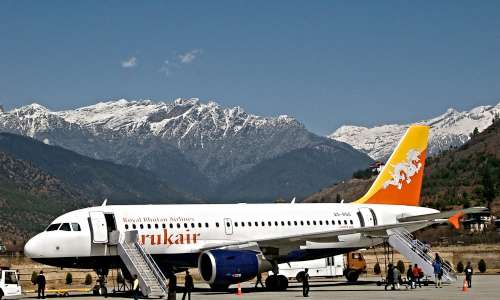
Day 7:
Farewell Bhutan – Departure. (B)
We will bid a fond farewell to this lovely Himalayan country today and fly to your next destination. We hope you’ve made some friends and have many images and wonderful memories of Bhutan by now!And we hope to see you again soon in this lovely world of countless enchantments! Tashi Delek!
What’s Included:
- Private guided tour
- Visas for Bhutan
- Airport transfers
- Daily 3 meals (B/L/D) at designated restaurants or hotels
- Accommodation at 3 star Bhutanese boutique hotels and resorts
- A qualified & licensed English-speaking guide
- An experienced driver
- A tour vehicle
- Entry fees & road permits
- Government Sustainable development fees
- Daily refreshments
- Set of traditional costume
- Full service & assistance before, during and after your Bhutan trip
What’s Excluded:
- Flight into Bhutan via Drukair (can be arranged with us)
- Flight on other airline to catch Drukair Flight
- Meals at 5 stars restaurants
- Hotel stay outside of Bhutan
- Expenditure of personal nature
- Travel Insurance
- Gratuity for the guide and driver
- Alcoholic drink
Suitable Months:
- Whole year round
- High Season: March-May and September-November
- Low Season: December-February and June-August
Prices:
- For Travel during the months of: Dec-Feb and Jun-Aug USD 2550 or 1 person traveler
- USD 2400 per person for 2 person travelers
- USD 2400 per person for group with 3 or more
- For Travel during the months of: Mar-May and Sept-Nov USD 2700 for 1 person traveler
- USD 2550 per person for 2 person travelers
- USD 2200 per person for group of 3 and above
Our Guarantee:
Visa acceptance is guaranteed. In terms of Visa issuing, we have yet to disappoint any of our travelers. Prior to your arrival, your hotel selection will be confirmed for inspection. We only book you into hotels that you enjoy and would return to.
If you are not satisfied with our choices, we will gladly alter your guide, driver, or vehicle during the first two days of your arrival in Thimphu. Our hospitality team is there to assist you 24×7.
HOTELS IN BHUTANBHUTAN

HOTELS IN THIMPHU

HOTELS IN PUNAKHA

HOTELS IN PARO

HOTELS IN Phobjikha valley
